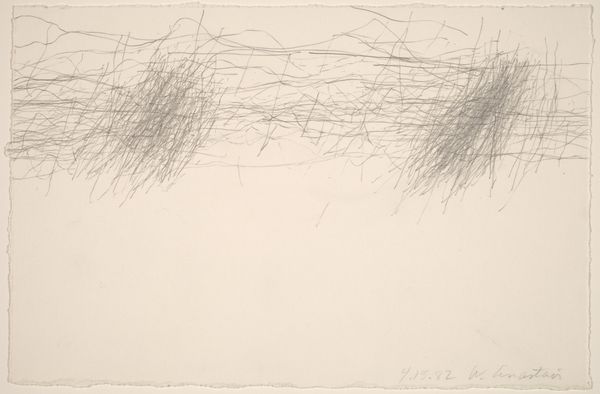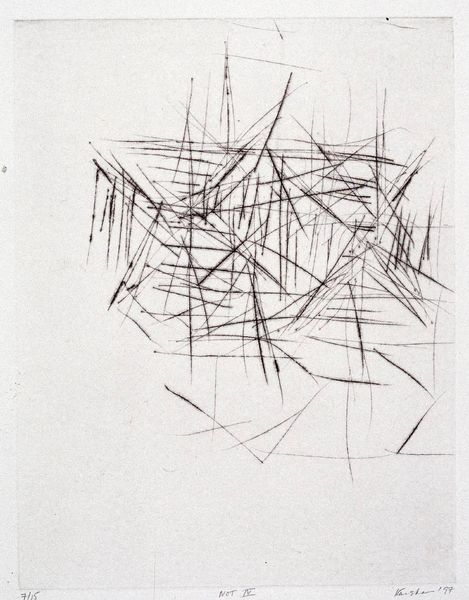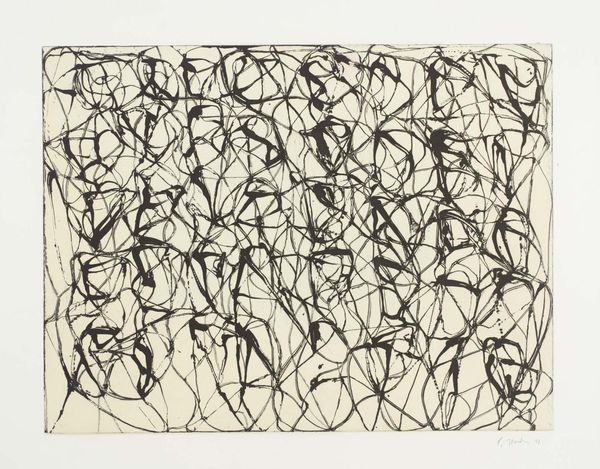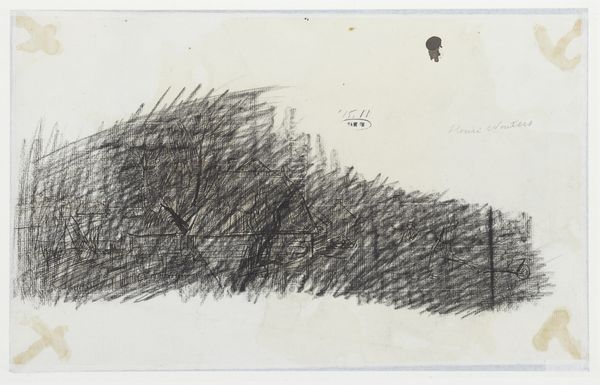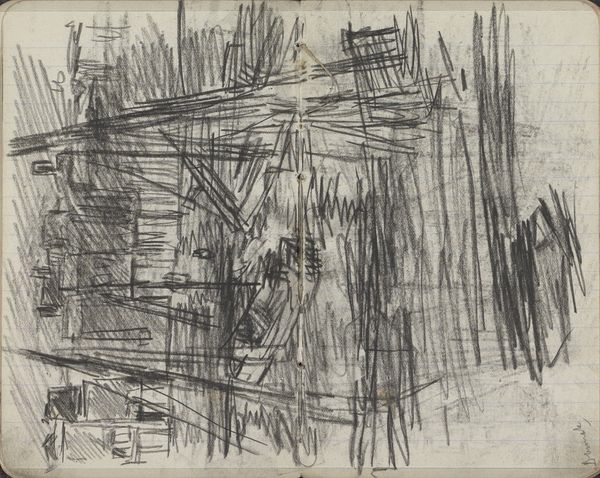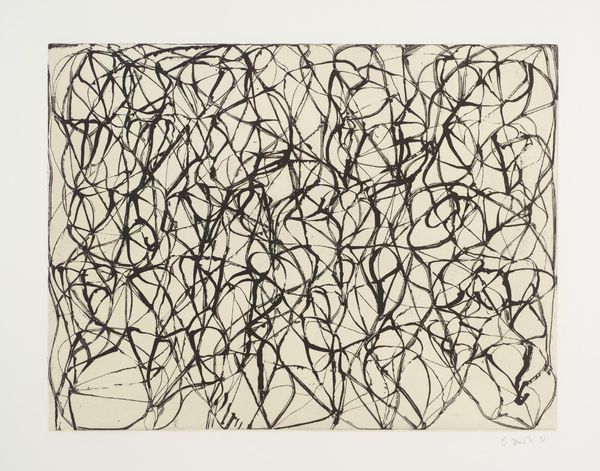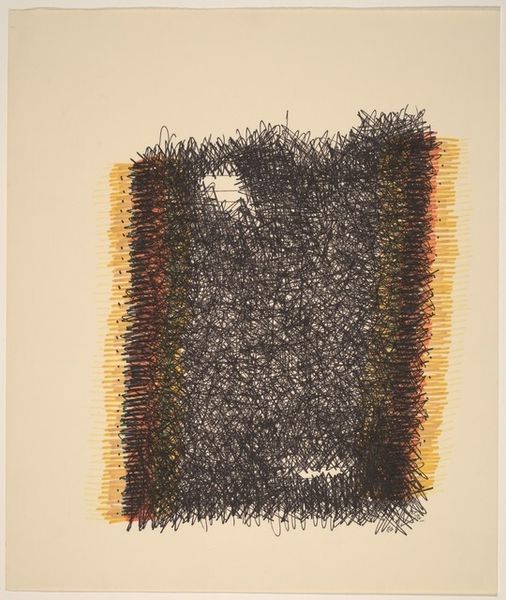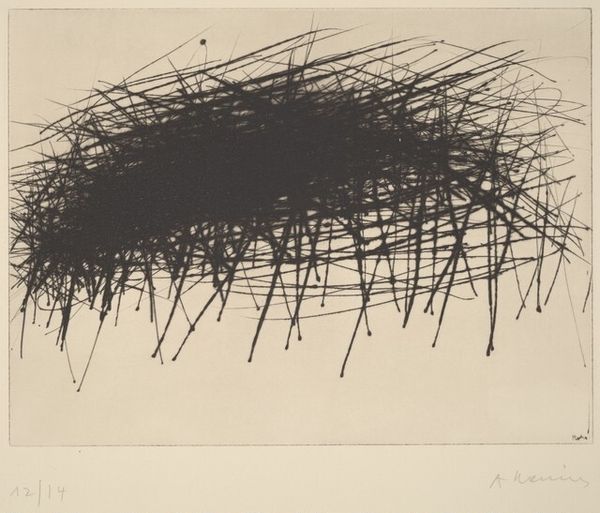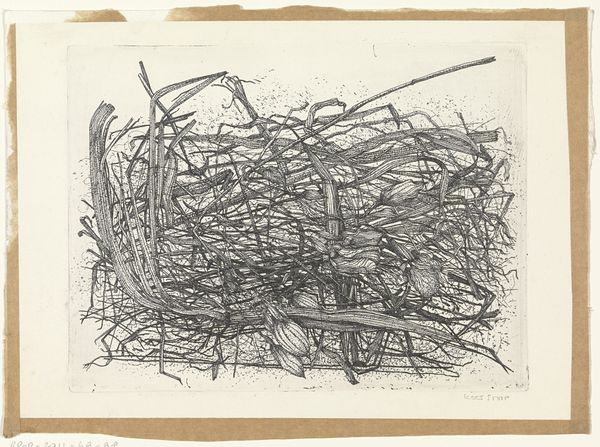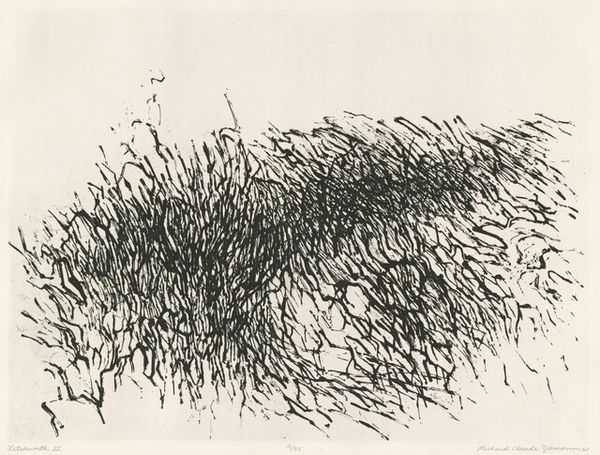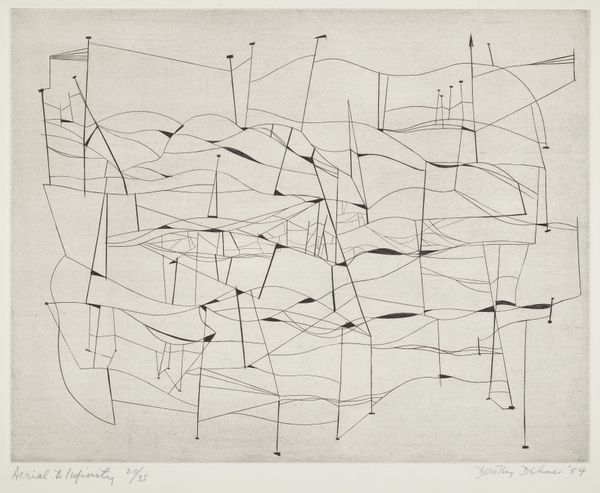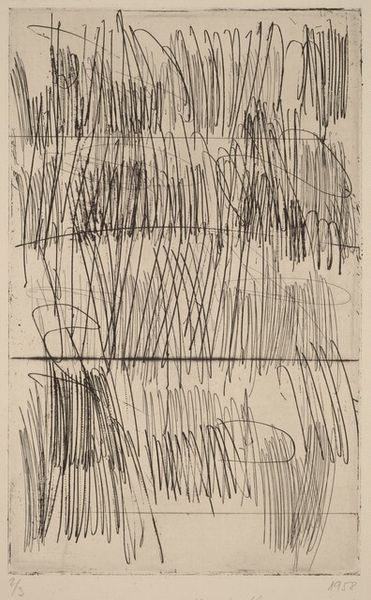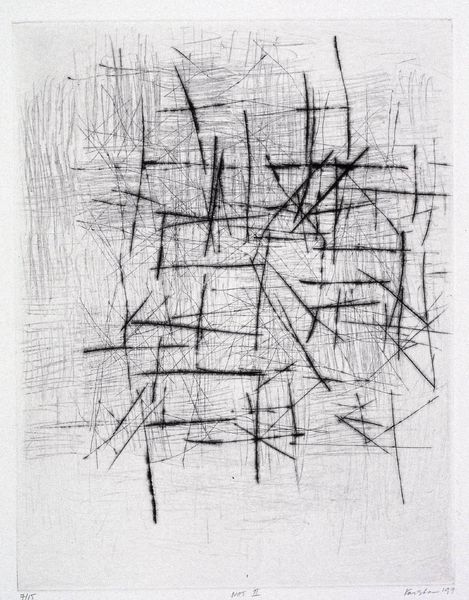
drawing, graphite
#
drawing
#
light pencil work
#
organic
#
organic shape
#
etching
#
abstraction
#
line
#
graphite
Dimensions: overall: 23.1 x 31 cm (9 1/8 x 12 3/16 in.)
Copyright: National Gallery of Art: CC0 1.0
Curator: William Anastasi's "Subway Drawing" from 1999 presents us with a fascinating study in graphite. What's your initial take on this work? Editor: It strikes me as… agitated. Those dense, scribbled areas interrupt the otherwise placid horizontal lines, creating a feeling of anxiety within the calm. Curator: Precisely. Anastasi created these drawings while riding the New York City subway. With his non-dominant hand, holding a pencil to paper, the motion of the train essentially dictated the mark-making. Think of the socio-political implications here: a person relinquishing control within a crowded, impersonal urban system. Editor: That loss of control really does underscore the drawing's social commentary. By embracing chance operations and surrendering his agency, he highlights our precariousness within larger societal structures. Is he critiquing our perceived freedom, maybe pointing to the quiet constraint of late capitalism? Curator: Yes, and consider too the very act of creation. He's utilizing readily available, inexpensive materials – paper and graphite – and a ubiquitous public space, the subway car, as his studio. This challenges traditional notions of artistic production that celebrate studio practice or refined skill, democratizing artmaking. Editor: I appreciate that the 'errors' and unevenness in the drawing are a deliberate and critical choice. Anastasi turns something perceived as flawed or unskilled into the heart of his artistic language. It feels… defiant, almost. Curator: Exactly! It's a defiance rooted in accessibility, process, and an acceptance of the conditions of its making. Editor: So, beyond its material conditions, this becomes a commentary on access, social structures, and the very meaning of authorship in a rapidly urbanizing society. Curator: I agree. This graphite work pushes boundaries between what is deemed 'fine art' versus a common artifact found anywhere, forcing us to re-evaluate our expectations for both. Editor: Ultimately, it is the unedited nature of the act and the evidence of those actions that give “Subway Drawing” a powerful message. It offers us a raw portrait of life within the constraints of public transit. Curator: And an astute interrogation of both artistic processes and our urban existence.
Comments
No comments
Be the first to comment and join the conversation on the ultimate creative platform.
